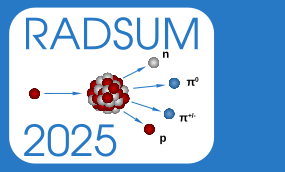Speaker
Description
The superconducting properties of rare-earth barium cuprates (REBCOs) are extremely sensitive to the presence of crystal defects. Irradiation of REBCOs with energetic particles produces a plethora of defects, difficult to characterize thoroughly with experimental investigations alone, in particular at the expected working conditions. Atomistic simulations can assist in the understanding of the generated defect structures and provide insights in the microscopic mechanisms leading to change in properties.
In this talk I will show how the radiation damage is modelled from atomistic simulations, focusing on molecular dynamics (MD) simulations of collision cascades. I will start by introducing the typical setup for running MD simulations to model the first stages of defect production induced by a primary recoil, followed by our current understanding of radiation-induced defects in YBa$_2$Cu$_3$O$_7$. Recent progresses in the integration of damage according to experimentally relevant radiation environments by combination of binary collision approximation and MD will be shown, as well as improvements of the description of interatomic interactions with machine learning potentials.
